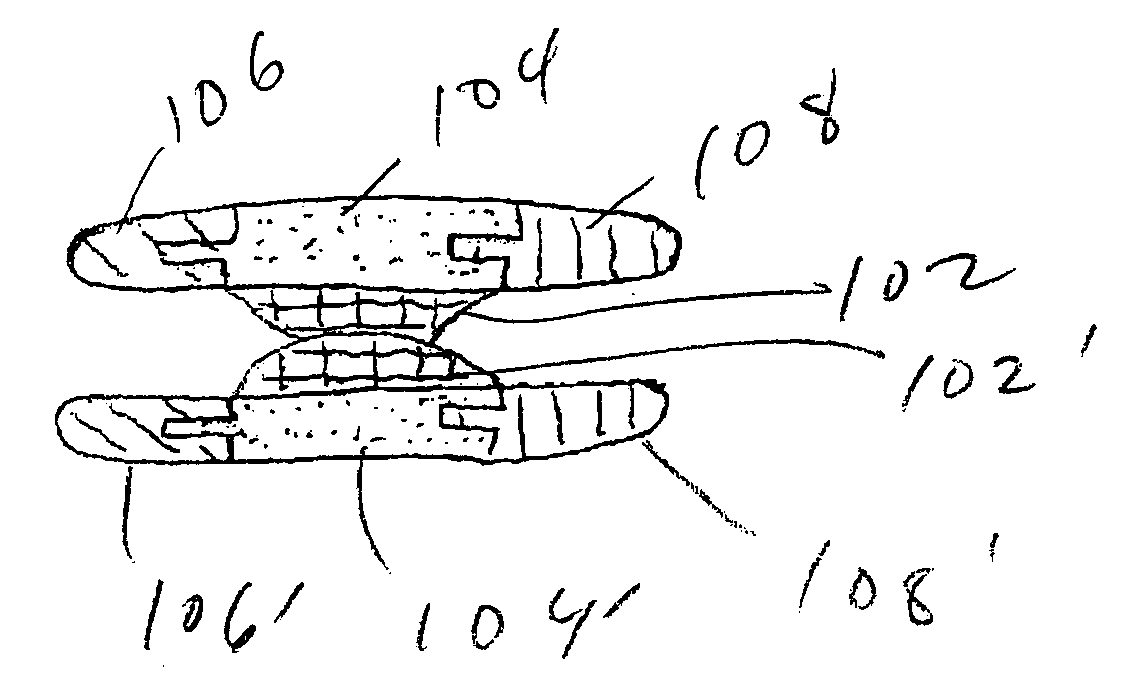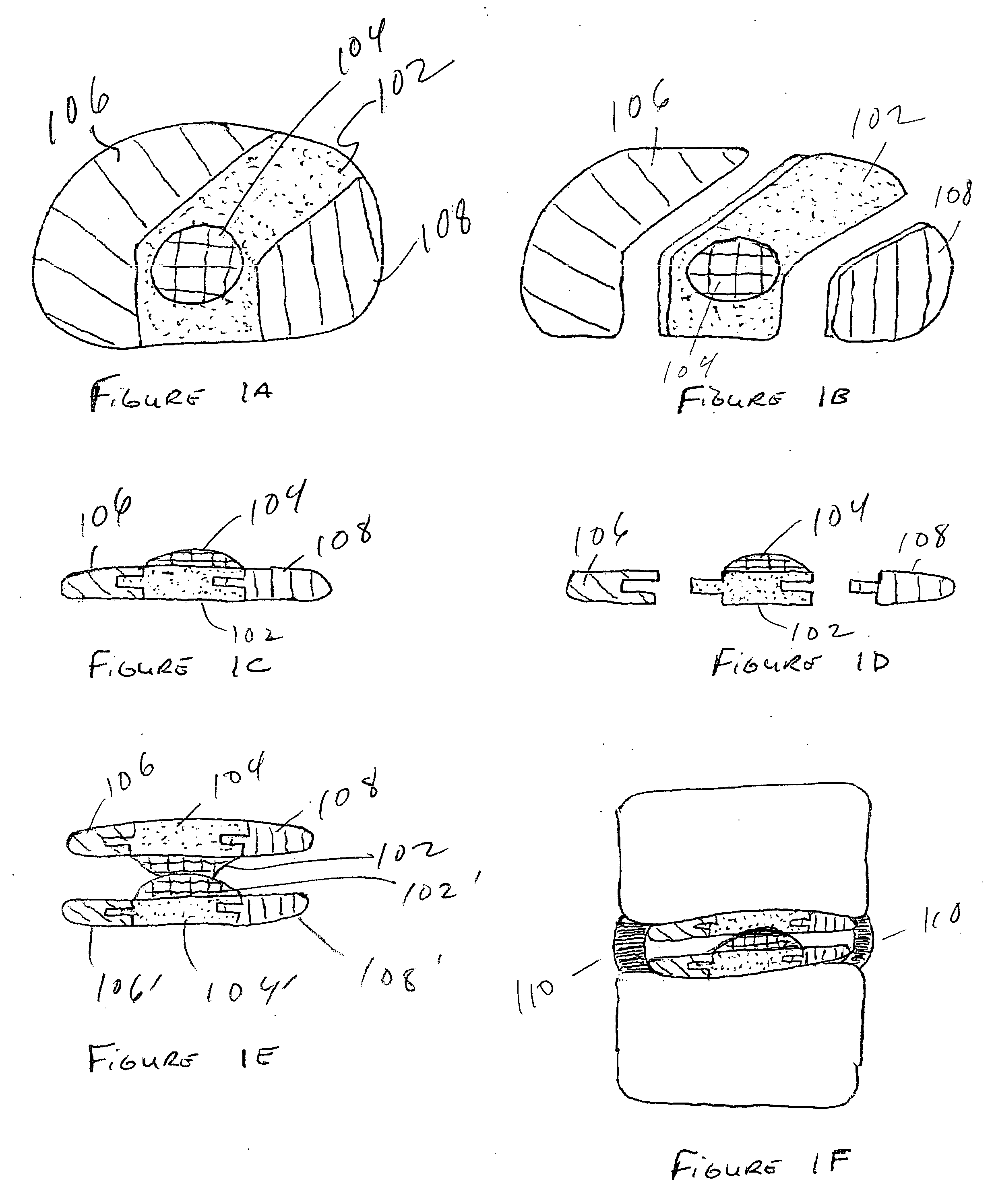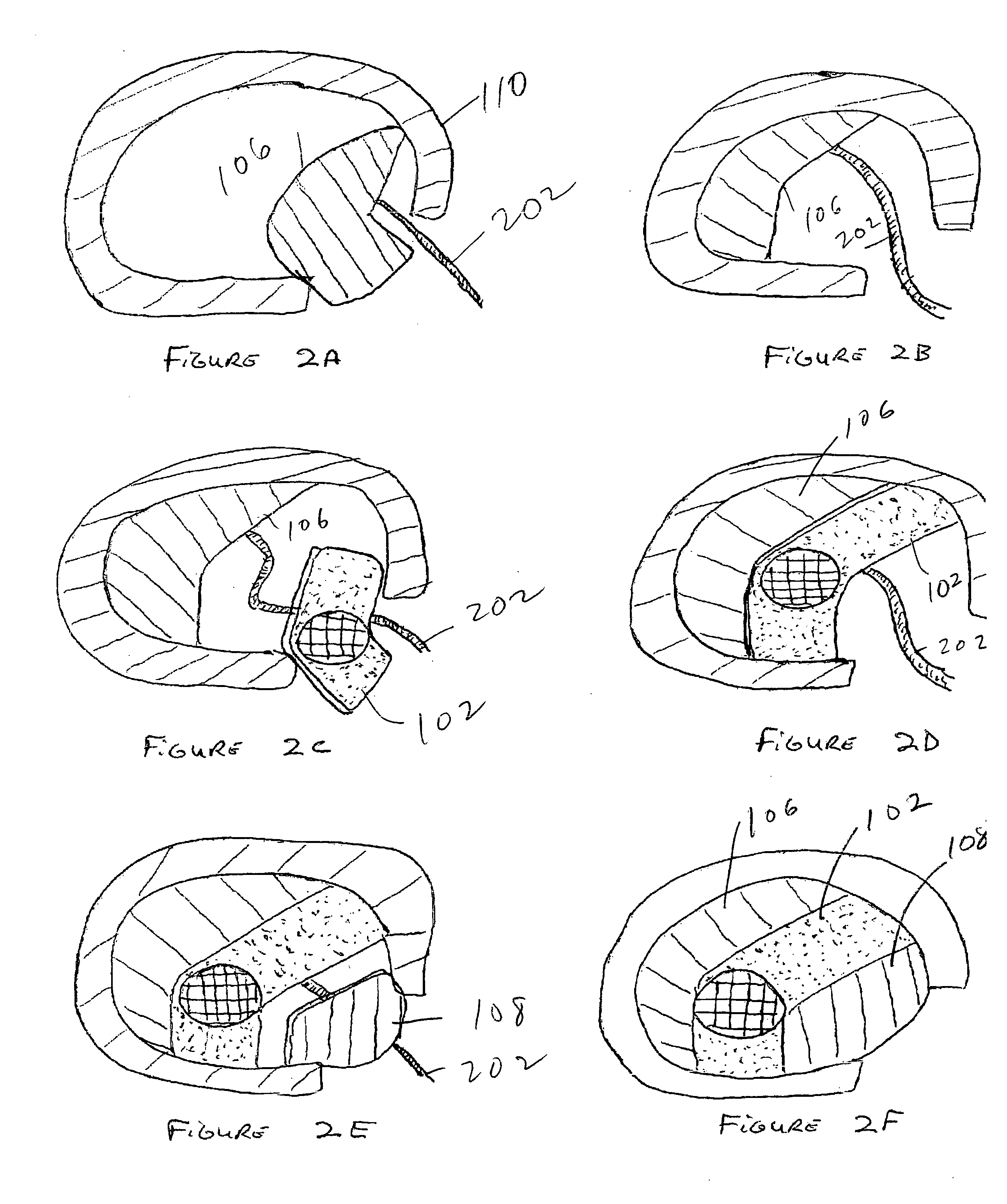Assembled disc spacers
a disc spacer and assembly technology, applied in the field of spinal surgery, can solve the problems of reduced disc degeneration treatment effect, and reduced disc degeneration treatment effect, and achieve the effect of reducing the pressure on the vertebral endpla
- Summary
- Abstract
- Description
- Claims
- Application Information
AI Technical Summary
Benefits of technology
Problems solved by technology
Method used
Image
Examples
Embodiment Construction
[0047]FIG. 1A is a view of the top of the articulating side of preferred embodiment of the invention. The assembled component may represent the top or bottom half of a disc spacer. The center component 102 contains a spherical articulating surface 104. The spherical articulating surface may be concave, convex, flat, or some combination thereof depending upon the opposing articulating surface. Separate components 106, 108 are located on either side of the component with the articulating surface.
[0048]FIG. 1B is an exploded view of the top of the embodiment of the invention drawn in FIG. 1A. FIG. 1C is a lateral view of the embodiment of the invention drawn in FIG. 1A. FIG. 1D is an exploded lateral view of the embodiment of the invention drawn in FIG. 1B. FIG. 1E is a lateral view of an assembled disc spacer in the preferred embodiment of the invention. The device is made of six components.
[0049]FIG. 1F is a coronal cross section of the spine and the embodiment of the invention dra...
PUM
 Login to View More
Login to View More Abstract
Description
Claims
Application Information
 Login to View More
Login to View More - R&D
- Intellectual Property
- Life Sciences
- Materials
- Tech Scout
- Unparalleled Data Quality
- Higher Quality Content
- 60% Fewer Hallucinations
Browse by: Latest US Patents, China's latest patents, Technical Efficacy Thesaurus, Application Domain, Technology Topic, Popular Technical Reports.
© 2025 PatSnap. All rights reserved.Legal|Privacy policy|Modern Slavery Act Transparency Statement|Sitemap|About US| Contact US: help@patsnap.com



